2026 Decor Forecast: How to Make Your Home Feel Modern Yet Timeless
As we look ahead to 2026, the interior design world is entering a sweet spot where modernity and timelessness converge. Gone are overly sterile minimalism and ultra-trendy gimmicks—instead, design is leaning into warmth, authenticity, and craftsmanship. The forecast for 2026 centers on deeply personal, human-focused spaces that feel both fresh and enduring.
In this article, we’ll dive into the core trends that are shaping homes in 2026 — from color palettes and material choices to furniture silhouettes and lighting. We’ll also explore how you can apply these trends thoughtfully so your space feels current but also built to last.
1. The Design Philosophy of 2026: Why “Modern Yet Timeless” Matters
Before we get into specific trends, it’s worth understanding the overarching design philosophy driving 2026:
-
Authenticity Over Polished Perfection: There is a growing appreciation for imperfect, handmade, or well-worn pieces. Designers are embracing materials that age — wood with patina, unlacquered metals, and handwoven textiles.
-
Function + Flexibility: Homes are more than showplaces. With remote work, multi-generational living, and changing routines, interiors need to adapt. Designers predict a rise in multipurpose rooms and modular layouts.
-
Sustainable Comfort: Sustainability isn’t just about eco‑friendly labels — it’s about thoughtful longevity. Durable materials, resilient design, and energy-conscious choices are key.
-
Quiet Luxury, Not Opulence: The new luxury isn’t shiny and loud; it’s refined, warm, and understated. Think natural materials, quality craftsmanship, and pieces that feel personal.
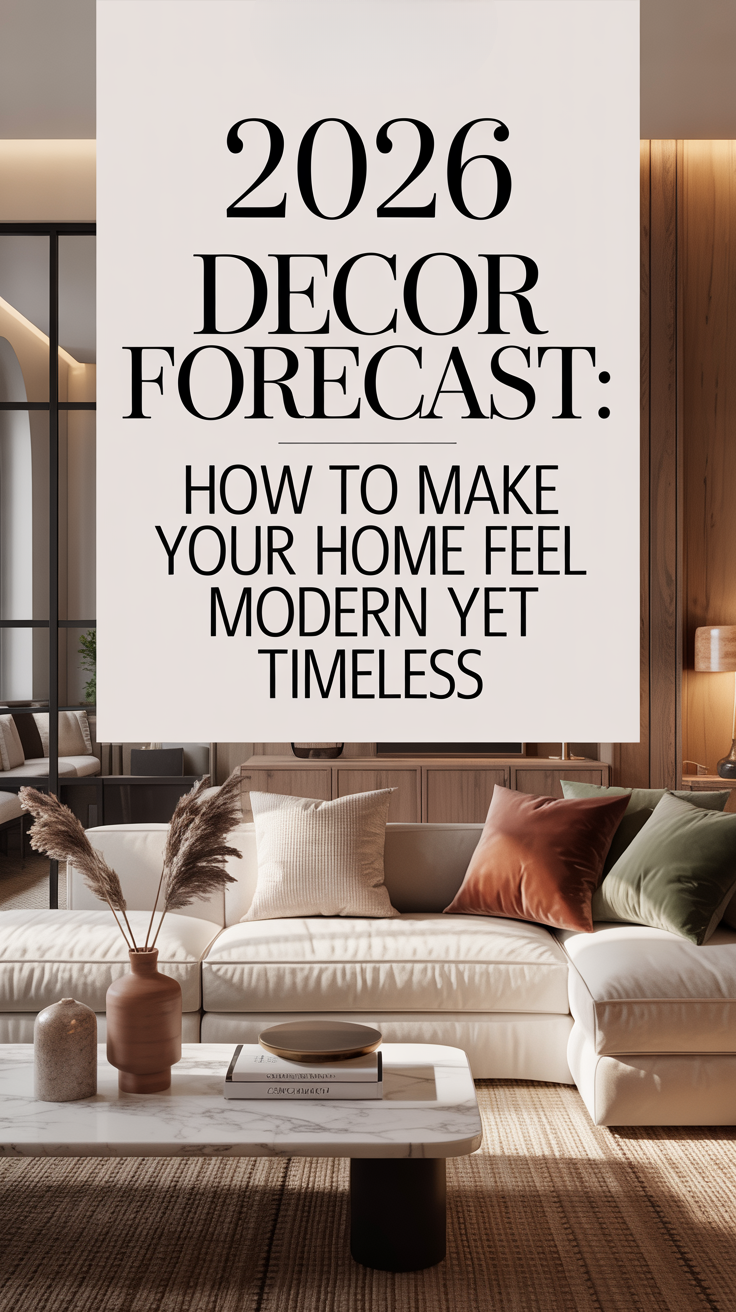
2. Color Trends: Earth, Depth & Subtle Sophistication
Color is central to making a space feel both modern and timeless. In 2026, the palette leans into grounding, layered tones that feel rooted, not fleeting.
2.1 Earthy and Grounded Neutrals
Warm neutrals are set to dominate, with shades like clay, khaki, mocha, and sand leading the way. These tones create a calming foundation, especially when paired with natural materials like linen, wood, and stone.
2.2 Rich Accent Colors
Designers are embracing deeper, emotive hues — think dark greens, burgundy, rich browns, and even muted plum. These shades recall classic palettes but feel layered and fresh. Warm blacks, such as espresso or charcoal, also make a comeback, offering sophistication without harshness.

2.3 Expressive but Calm Greens
Green has evolved from a trend color to a new kind of neutral. Herbal greens — sage, moss, and eucalyptus — are gaining popularity as anchors in 2026 interiors.
2.4 Tone-on-Tone Layering
Rather than sharp contrasts, expect more subtle shifts in hue. Designers talk about “refined layering” — combining three textures, two finishes, and one statement color. This approach feels curated and timeless.
3. Material Trends: Natural, Crafted & Lasting
Materials in 2026 are all about authenticity, tactility, and sustainability. The choices reflect a desire for connection and permanence.
3.1 Organic and Sculptural Wood
Curved, flowing wooden furniture is one of the most notable material trends. Designers are favoring sculptural shapes — asymmetrical edges, live-edge wood, and organically curved silhouettes. These forms soften modern lines and bring a handcrafted feel to even the most refined spaces.

3.2 Imperfection and Artisanal Finishes
Mass-produced perfection is out; freehand artistry is in. Expect hand-painted motifs, imperfect ceramics, and hand-finished furniture that shows the maker’s touch. This trend reinforces the human behind the design.
Similarly, wood finishes are embracing embroidery-like carved patterns or subtle irregularities. These tactile details make each piece unique — more artifact than commodity.

3.3 Natural Textiles
Linen, organic cotton, and handwoven textiles continue to grow in popularity. These materials breathe, age gracefully, and add softness. Rugs, throws, and upholstery in these fabrics feel grounded yet elevated.
3.4 Honest Metals & Recycled Materials
Expect to see unlacquered metals (like brass, bronze, copper) showing their patina over time. Recycled glass, oxidized metal finishes, and sculpted ceramics made from reclaimed or repurposed materials are also on trend. These finishes tell stories and age beautifully — two features that help anchor a room over years.
4. Furniture & Form: Soft Curves, Bold Comfort & Sculptural Shapes
One key trend for 2026 is the movement away from rigid lines and toward more fluid, human-centric forms.

4.1 Curved Furniture & Architectural Softness
Rounded corners and arch motifs are everywhere — from chairs and sofas to doorways. Curved profiles bring a calming, gentle energy to rooms and help break up linear minimalism.
Circular coffee tables, wave-shaped sideboards, and sculptural armchairs are all part of this movement.
4.2 Oversized Comfort & “Fat” Furniture
Designers predict the rise of plush, oversized furniture that serves both form and function. These pieces are unapologetically cozy — think deep seats, generous proportions, and tactile upholstery — making the furniture itself a destination.
4.3 Built-ins and Zoned Storage
Flexible built-in walls are growing in popularity. They can incorporate open shelving, closed storage, benches, and media zones in one cohesive unit. Built-ins not only maximize space but also provide architectural permanence and visual harmony.
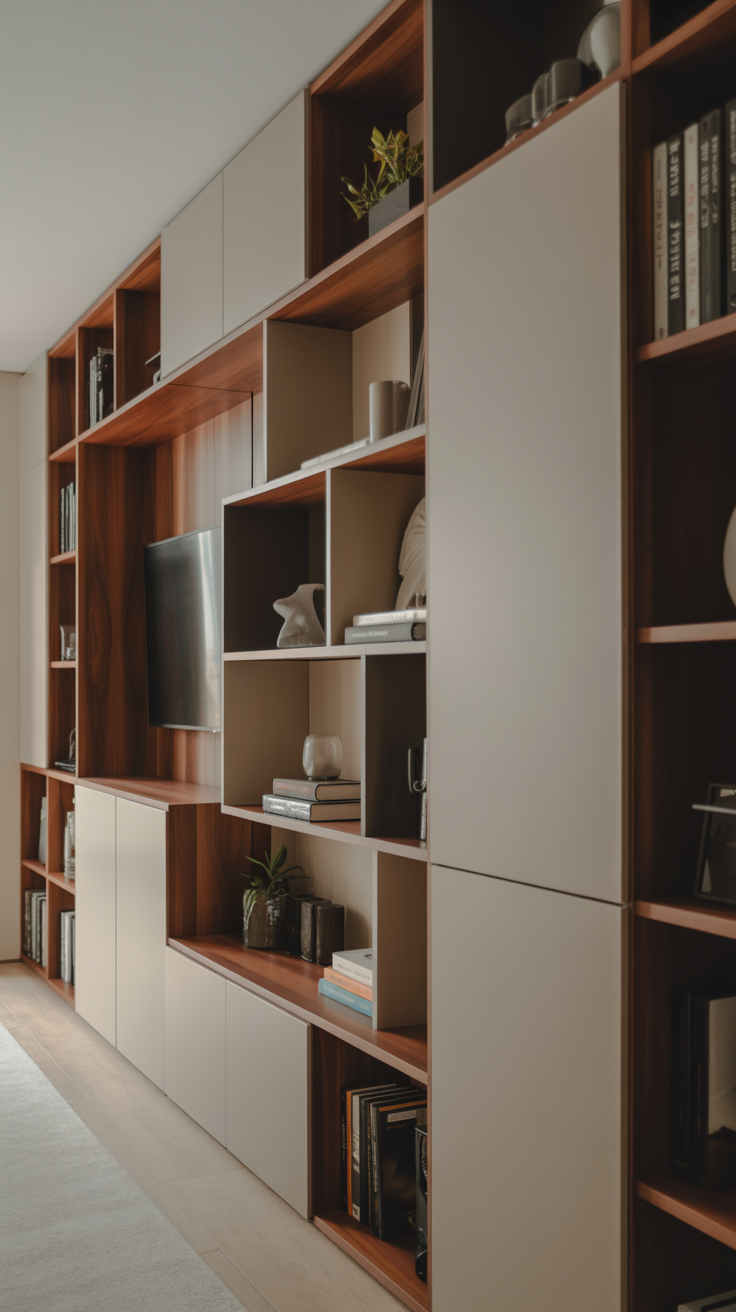
5. Patterns and Surfaces: Texture Meets Geometry
While minimalism isn’t retreating entirely, surfaces are gaining more personality through texture, pattern, and subtle sculptural detail.
5.1 Checkerboard Flooring
Checkerboard tile is experiencing (even greater) resurgence, per Houzz predictions. But it’s not just classic black and white — expect to see sage-and-cream (like we did at our flip a while back, Flippin’ Brushy!), burgundy, and emerald variations. Using honed marble or handmade terracotta tiles elevates this motif, making it feel refined and timeless.
5.2 Textured Accent Walls
Accent walls are being rethought for texture rather than just color. Limewashed plaster, slatted wood panels, and molding details (like panel molding done in tonal hues) are key. These textures help define space while adding warmth and dimensionality.
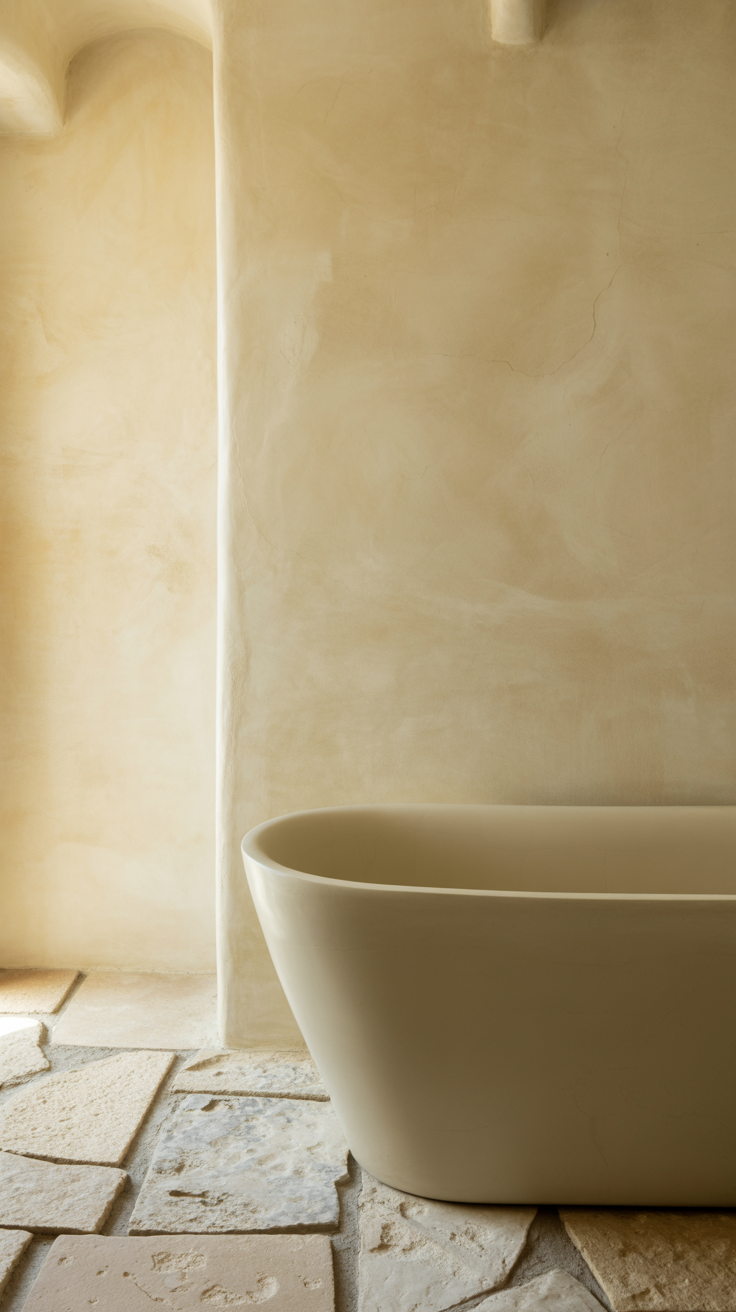
5.3 Bold & Organic Patterns
Patterns inspired by nature — flowing shapes, abstract motifs, and artistic brushstroke prints — are gaining traction. Designers are embracing bold wallpaper, upholstery, and rug patterns, but balancing them with grounded, neutral backgrounds so they don’t feel fleeting.
6. Lighting & Ambiance: Sculptural, Smart, & Layered
Lighting in 2026 is more than just functional — it’s a design feature that shapes mood and space.
6.1 Sculptural & Hybrid Lighting
Expect lighting fixtures to double as art. Pendant lights, floor lamps, and wall sconces will take on sculptural forms — curves, waves, abstract shapes. Designers also point to modular or hybrid lighting that can shift tone and intensity depending on use (work, relax, entertain).
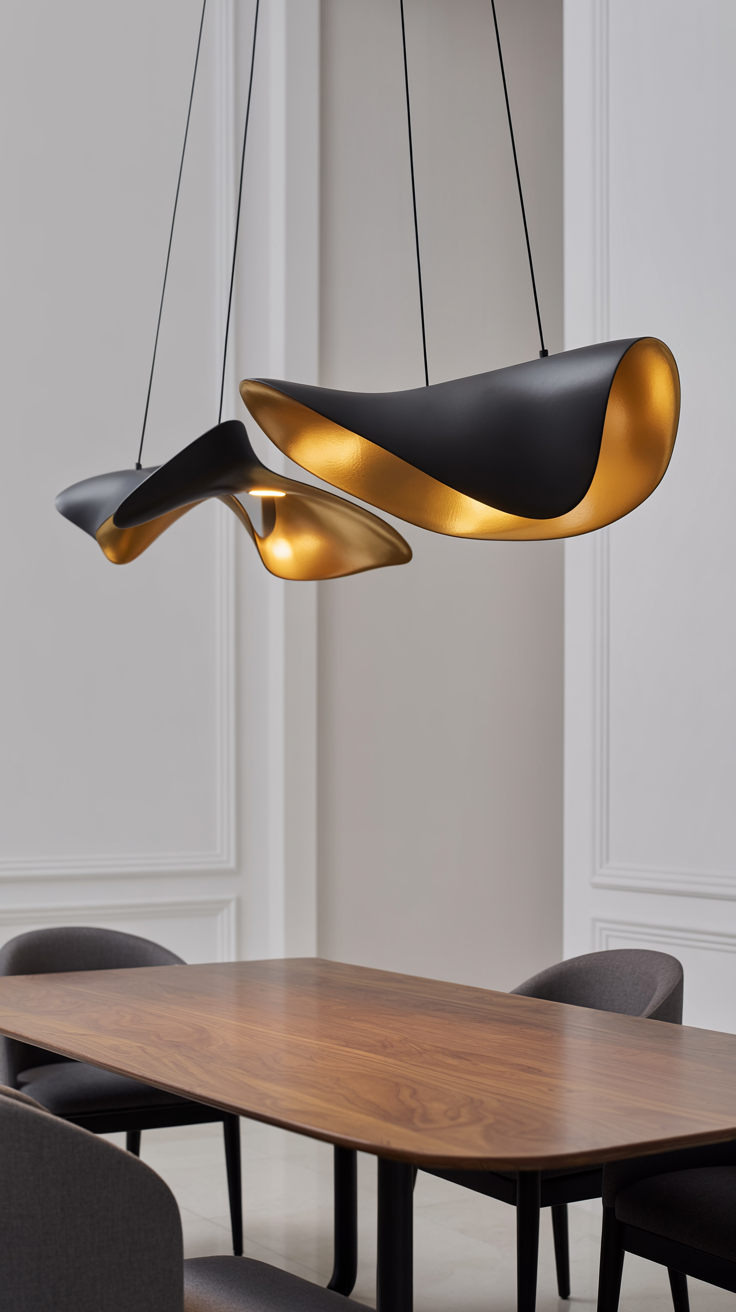
6.2 Circadian & Wellness‑Driven Light
Interior design is aligning more closely with well-being. According to trend forecasters, lighting designs that mimic natural daylight cycles (circadian lighting) are becoming more mainstream. This enhances comfort, supports wellness, and makes spaces feel more alive.
6.3 Layered Lighting & Refined Layering
To support the “refined layering” design approach, lighting will be layered — combining ambient, task, and accent light. The goal: curated warmth without sacrificing functionality.
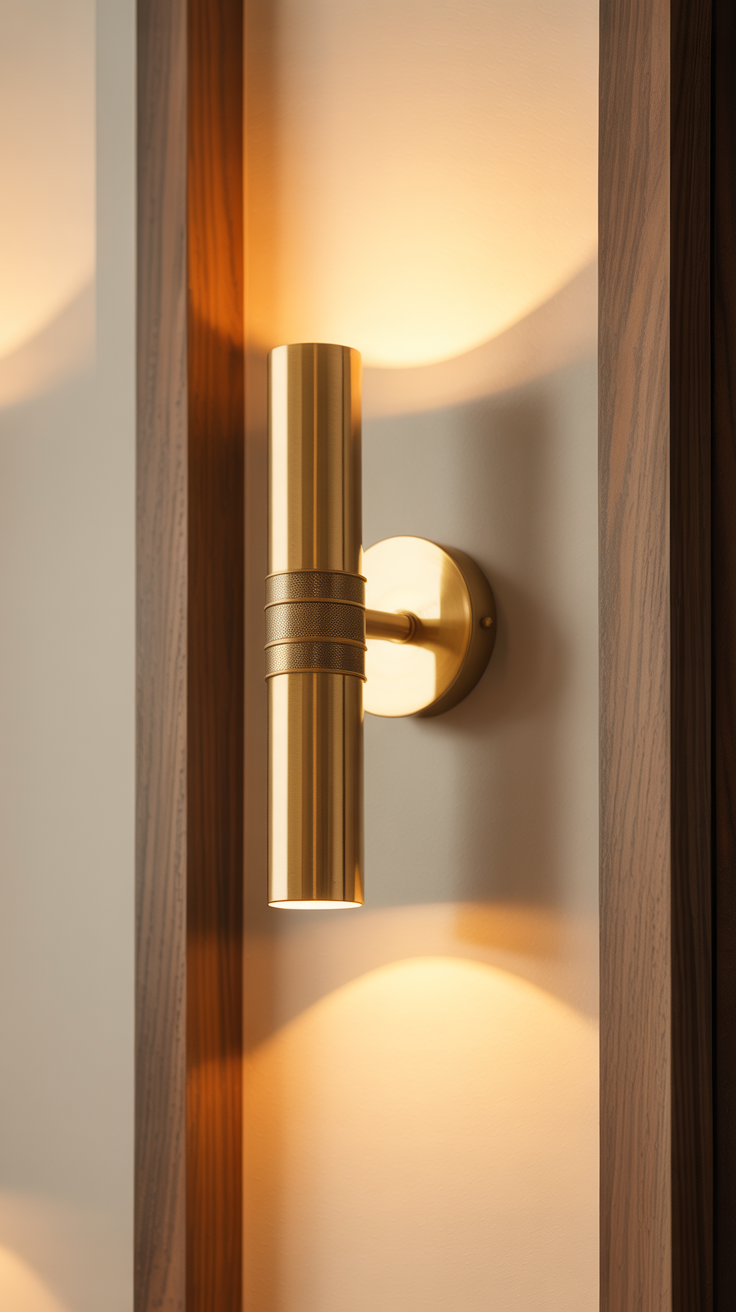
7. Layout & Function: Flexible Spaces for Modern Life
The way we live has changed, and 2026’s design forecast reflects that. Rooms are becoming more adaptable, with multipurpose functionality built in.
7.1 Multipurpose Rooms
Homes are being designed to flex. A living room might double as a workspace; dining areas can transform into reading nooks; built-ins can serve storage, media, and seating. This flexibility keeps a home feeling modern yet lived-in.
7.2 Built-in Architectural Details
As mentioned, built-in cabinetry and shelving offer a timeless architectural anchor.These features give permanence to design — supporting both function and form.
7.3 Wellness Zones
In 2026, spaces dedicated to wellness (quiet corners, spa-like bathrooms, indoor greenery) are on the rise. These design elements go beyond aesthetics — they support mental and physical well-being.
8. Sustainability & Longevity: Designing to Last
Sustainability isn’t just a trend; it’s becoming a timeless design principle. Here’s how 2026 is leaning into longevity:
8.1 Durable, Quality Materials
Rather than fast, throwaway decor, there’s a focus on materials that age gracefully — natural wood, stone, and woven textiles.These materials don’t just look good now; they develop character with time.
8.2 Sustainable Finishes & Recycled Elements
Designers are increasingly using recycled glass, oxidized metals, and repurposed ceramics.These finishes make a statement and reduce environmental impact.
8.3 Resilient, Human-Centered Design
Trend forecasters expect homes to be more resilient — not just to climate, but to lifestyle shifts.This includes energy-efficient design, adaptable layouts, and materials that can stand up to wear and tear while maintaining beauty.
9. Decorative Style & Accents: Craft, Heritage & Personal Touch
Decor in 2026 will be deeply personal, crafted, and meaningful — not just pretty.
9.1 Quiet Luxury & Heirloom Quality
Instead of flashy trends, the focus is on restraint and craftsmanship: wool rugs, cashmere throws, natural stone surfaces, and artisan objects. These are pieces that feel refined and built to last.
9.2 Artisanal Objects & Handcrafted Details
Hand-thrown pottery, hand-painted ceramics, and bespoke furniture become more prevalent. These objects bring soul and uniqueness to a space.
9.3 Collected Interiors
“Collected over time” is the aesthetic of choice. Designers emphasize combining vintage or sentimental pieces with modern furniture — creating a layered, meaningful home.
9.4 Neo-Deco Updates
Art Deco is back, but reimagined. Think geometric patterns, fluted glass, sunburst motifs, and metallic accents in brass or chrome — but executed in a lighter, more contemporary way. These details add glamor without feeling dated.
10. Color + Pattern in Accessories: Bold Yet Grounded
Accessories in 2026 add personality without breaking the timeless feel.
-
Wallpaper & Rugs: Expect textured wallpapers, organic patterning, or even bold prints balanced with natural surfaces.
-
Textile Accents: Throw pillows, upholstery, and throws will lean into embroidery, painterly motifs, and brushstroke details.
-
Metals & Finishes: Accessories in warm metallics — brass, bronze, copper — create continuity and warmth across a space.
11. Putting It All Together: Creating a Modern Yet Timeless Home
So, how do you bring all these trends into your own home without making it look like a magazine set? Here are practical principles to guide you:
Principle 1: Start with a Grounded Foundation
Use warm neutrals or earthy tones for walls, large furniture, and key surfaces. These hues act as a timeless base. Add depth with one or two richer accent colors.
Principle 2: Invest in Craft and Longevity
Opt for natural wood furniture, artisan-made decorative pieces, and high-quality textiles. These pieces mature with use, becoming more beautiful over time.
Principle 3: Prioritize Soft, Curved Forms
Integrate curved sofas, sculptural chairs, and rounded details to soften any space. These forms feel modern but also human.
Principle 4: Layer Thoughtfully
Combine textures, finishes, and materials using the “3-2-1” rule: three textures (e.g., wood, linen, metal), two finishes (e.g., matte, polished), and one statement colour or object. This method ensures depth without clutter.
Principle 5: Embrace Flexible Layouts
Design rooms that can adapt. Use modular furniture, built-ins, and dual-purpose spaces — so your home works for hosting, working, relaxing, and more.

Principle 6: Light with Intention
Use layered lighting — ambient, task, and accent — to create mood and adaptability. Consider circadian lighting to boost wellness.
Principle 7: Add Meaningful Accents
Choose decor that tells a story — heirloom pieces, handcrafted objects, or vintage finds that reflect who you are and how you live.
Principle 8: Think Long-Term
When selecting materials and finishes, think beyond the aesthetic. Choose quality, sustainability, and resilience to ensure your interior stands the test of time.
12. Room-by-Room Trend Applications
Here’s how the 2026 forecast might look in different rooms of your home:
12.1 Living Room
-
A soft, curved sofa in a warm neutral fabric
-
A sculptural coffee table made from live-edge wood
-
Rounded archways or curved built-ins
-
Layered lighting: a sculptural pendant, floor lamp, and accent table lamp
-
Textured rug + throw pillows with organic patterns
12.2 Kitchen
-
Flat-panel, slab-front cabinets in walnut or mahogany
-
Natural stone or clay-inspired countertops
-
Checkerboard tile (marble or handmade terracotta) on the floor or backsplash
-
Curved or rounded-edge furniture (islands, breakfast tables)
-
Brass or bronze hardware for warmth
12.3 Bedroom
-
Linen or organic cotton bedding
-
Wooden bed frame with a simple, soft curve
-
Built-in storage with warm wood finishes
-
Soft, layered lighting for reading and ambiance
-
Handcrafted decor: pottery, ceramics, or woven textiles
12.4 Bathroom
-
Spa-inspired finishes: limewashed plaster walls or textured surfaces
-
Natural stone or recycled-material vanities
-
Freestanding or sculptural lighting
-
Well-placed greenery or air‑purifying plants
13. Challenges & Considerations
While these trends feel hopeful and grounded, there are some potential pitfalls and cautions to keep in mind:
-
Cost of Quality: Prioritizing craftsmanship, natural materials, and artisan objects can be expensive. But it’s an investment — these pieces last.
-
Balance vs. Over-Curating: There’s a fine line between a collected, layered home and a cluttered one. Use restraint and edit thoughtfully.
-
Sustainability Greenwashing: Not all “eco” labels are equal. Look for materials and products with real sustainability credentials.
-
Adaptability: If you buy for trends, your home may feel dated. Instead, focus on flexible pieces (modular furniture, neutral bases) that can evolve.
-
Lighting Complexity: Layered and circadian lighting can be technically more complex to design and install. It’s worth consulting a lighting specialist.
14. Why This Trend Forecast Matters
Understanding these 2026 trends isn’t just about following what’s “in.” It’s about designing a home that:
-
Reflects your personal values (craft, sustainability, longevity)
-
Serves your lifestyle (flexibility, wellness, adaptability)
-
Feels timeless — not trendy — so you’re not redecorating every few years
-
Balances beauty and meaning: every piece tells a story

A home that’s “modern yet timeless” in 2026 isn’t just stylish — it’s deeply human, rooted in history, and open to the future.
The 2026 decor forecast reveals a design moment where elegance and authenticity converge. Homes will lean into soft forms, natural materials, handmade finishes, and richly layered textures — all while keeping a foot in practicality and sustainability.
By prioritizing quality over excess, personal meaning over fleeting aesthetics, and flexibility over rigidity, it’s possible to create interiors that feel truly timeless without sacrificing modern comfort.
Whether you’re planning a major redesign or simply looking to refresh a room, these guiding principles and emerging trends can help you make choices that resonate today and still feel relevant years from now.


